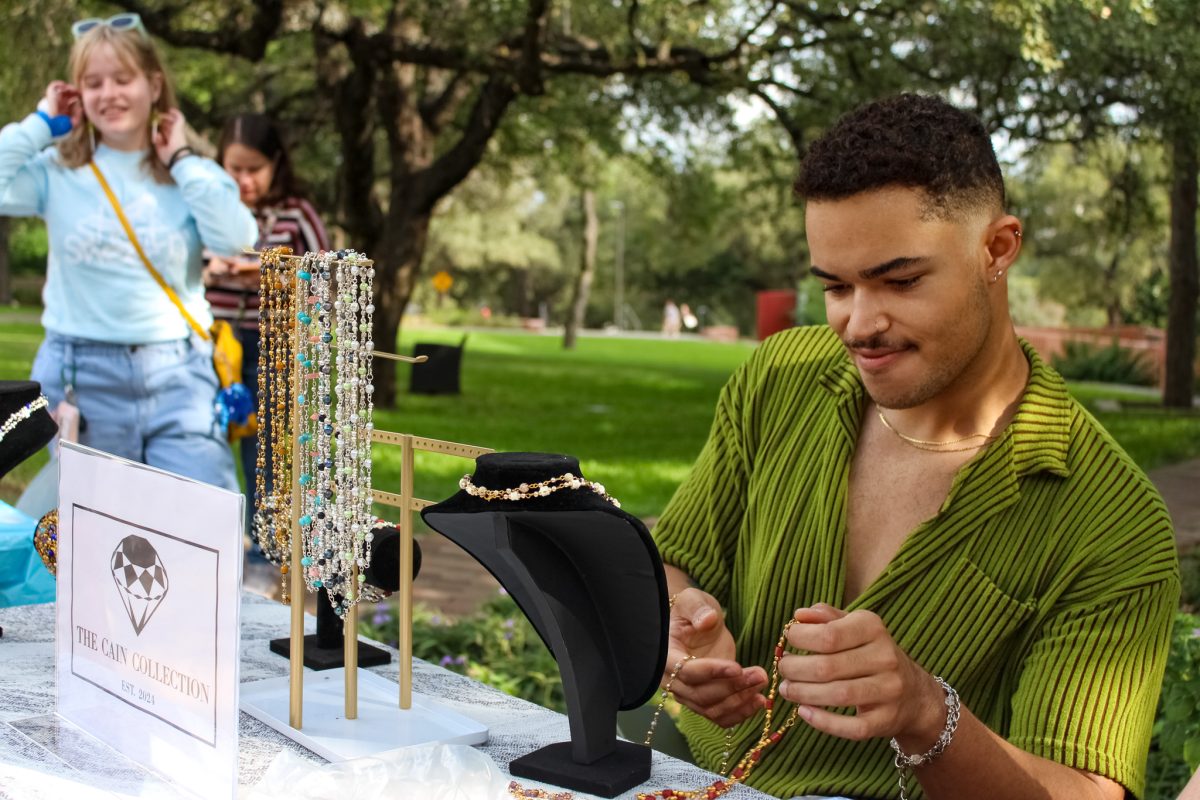As the Texas winter slowly descends on Trinity University, you may be wondering, “What should I wear this winter?” Fear not, Trinity’s fashion enthusiasts are here to help. In this article, they predict upcoming trends, outline some must-have winter staples and suggest how to style them while staying warm and chic.
As trends continue to cycle, fashionistas must predict what fashion decade will be making a return this year. Alex Kang, sophomore physics major, described their personal style as a colorful eccentric grandma. They predict that this winter season will feature a blend of 2000s and 2010s styles. Kang said the twee aesthetic specifically seems to be making a comeback, featuring pieces like flats and low-rise jeans.
“I feel like almost we’re dabbling in 2010 trends, but just kind of taking what we liked from that,” Kang said. “So no galaxy leggings.”
It is important to note that in preparation for the new season, not everything needs to be brand new. Genevieve Ellis, senior biology major, draws most of her fashion inspiration from early 2000s fashion. She suggests using layering to incorporate warm-weather pieces into your cold-weather wardrobe.
“I think it’s fun, in terms of layering, if you wear shorts and then, if it’s a little chillier, throw in the long sleeve and then a thicker sweater. I feel like those things you might not think would go because it’s shorts in cold weather, but it looks so cute,” Ellis said.
For this winter season, there are a few basic staples that are a highly recommended addition to your closet. Ellis suggests having one good pair of jeans and shorts that you can dress up or down, a favorite cold-weather shirt you can always turn to and a cozy chunky sweater. Kang suggests investing in boots like Dr. Martens or a fleece-lined boot like UGG. Monzerrat Munoz, sophomore English and philosophy double-major, suggests that a good mini skirt should be in your closet all year round.
“Slightly unpopular, but for winter, mini skirts. They are just awesome,” Munoz said. “If it’s slightly chilly, you can just do sheer tights, and you’re good to go — especially in Texas.”
For what pieces are “in” this season, Ellis predicts that tall brown boots with tights, off-the-shoulder sweatshirts and long-sleeve Henleys with lace undershirts will make an appearance. For colors, Kang said jewel tones like forest green, khaki and plum are some incoming trendy colors. Likewise, patterns like plaid, patchwork and vertical stripes will be trending. Munoz said “officecore” will be in this winter.
“My idea of officecore is officecore, but make it a mini skirt. Like, something that would definitely get me sent to HR,” Munoz said.
In contrast, Ellis said that patterned leggings were out, and so is lumberjack plaid. Munoz predicted that bows will fall out of favor this season due to their oversaturation in fashion over the past few months. Kang added that denim jackets with fleece lining should also take a backseat this winter. However, they added a qualifier that people should wear what they like most. Nothing is truly out, and personal style should come over arbitrary trends.
“In my head, I feel like that is what is out. But also, people should just wear whatever they want,” Kang said. “Those are, of course, like a classic staple to some people.”
Once you have the pieces, you just have to put them together. Ellis emphasized the importance of layering — not just for warmth but to add intrigue to outfits. Kang suggests that pattern mixing is a fun way to style your wardrobe. However, they caution against using the sandwich method, which includes matching the color or pattern of your top with your shoes.
“I don’t like the sandwich method,” Kang said. “For me, at least on myself, I feel like a cartoon character, I just don’t like the look on me. So I like to match my shoes to my shirt in a more subtle manner.”
To beat the cold, Kang emphasized the utility of layering. For thinner pants, try adding leggings under. The same principle can be applied to tops adding a long-sleeved top underneath a short-sleeved one. Munoz added that since Texas rarely gets cold, simply adding a light layer or two usually does the trick. Ellis suggests adding a scarf, both for an added accessory and for warmth. Additionally, Kang suggests focusing on adding heat to your torso.
“I just feel like making the torso warm is the most important part,” Kang said. “That’s where all your warmth is. So if your torso is warm, then the rest of your body should be okay.”









